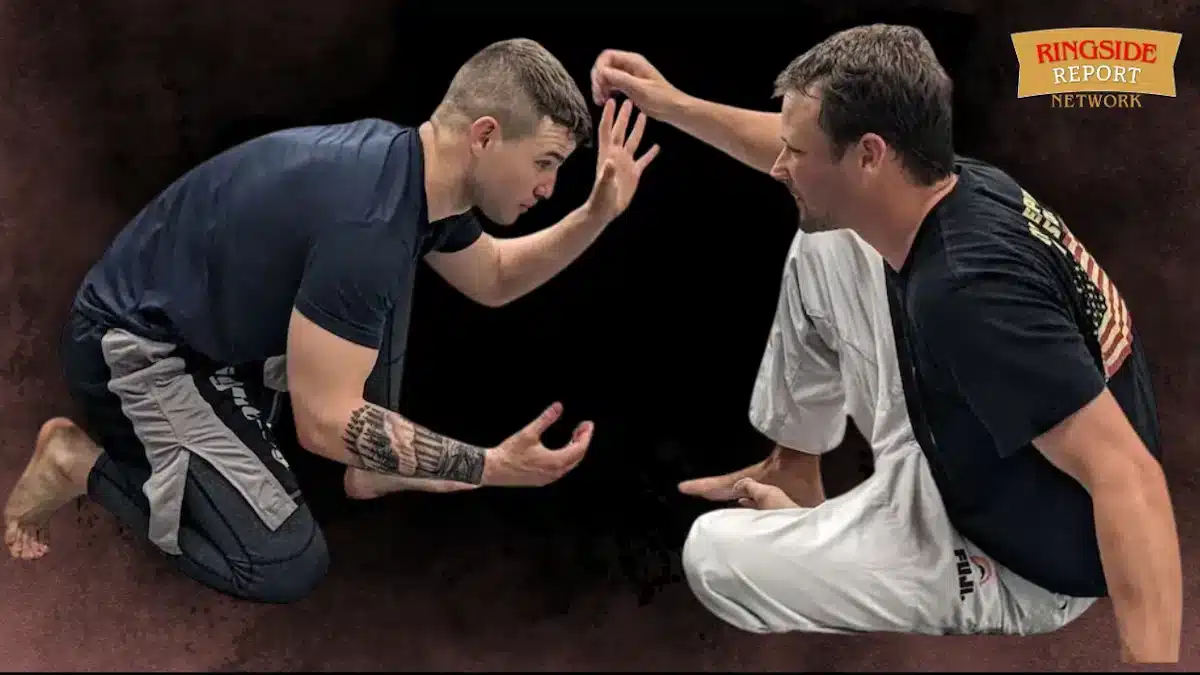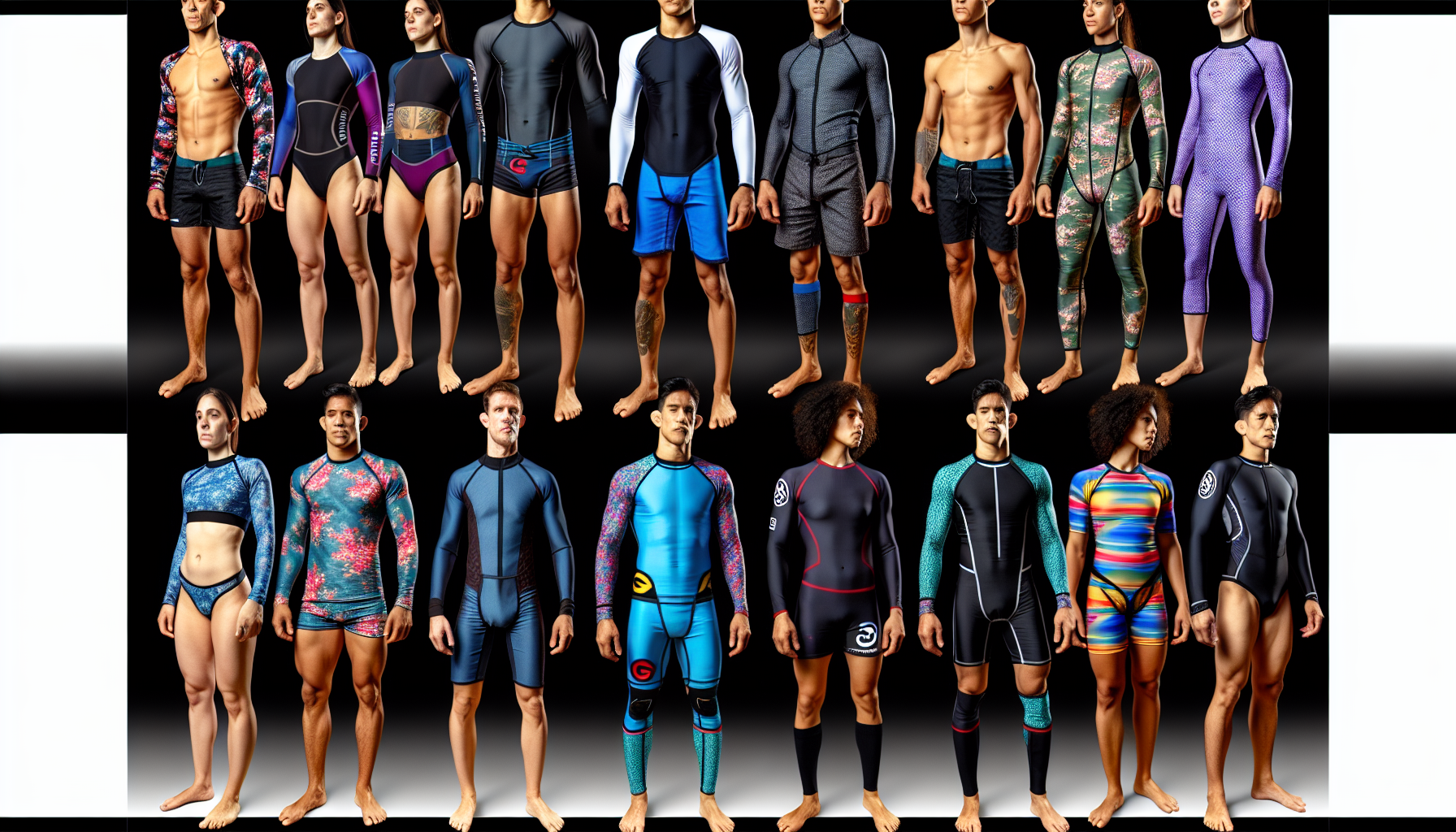For any jiu-jitsu practitioner, stepping onto the mat without a gi for the first time is a shock to the system. The pace is faster, the grips are gone, and the game feels entirely different. It’s a transition that can leave even seasoned grapplers feeling like beginners again.
But it doesn’t have to be frustrating. Transitioning from the gi to no-gi isn’t about throwing out your jiu-jitsu; it’s about adapting it. This guide will provide a clear roadmap for that transition, covering the crucial adjustments you need to make to your pace, grips, guard, and submission strategies to thrive in the world of no-gi grappling.
Key Takeaways
- Pace is Key: No-gi is significantly faster than gi. Your conditioning and reaction time will be tested. Drills that focus on scrambles and quick decision-making are essential.
- Grips are Different, Not Gone: You’ll trade collar and sleeve grips for wrestling-style controls like underhooks, overhooks, collar ties, and wrist control.
- Guard Play Evolves: Without lapels and sleeves to hold onto, your guard must become more active. You’ll rely on frames, butterfly hooks, and controlling your opponent’s body directly.
- New Submission Opportunities: While some gi chokes are unavailable, no-gi opens up a world of head-and-arm chokes (like the guillotine and D’Arce) and a wider array of leg locks.
1. Embracing the Pace: Adapting to the Speed of No-Gi

The single most significant difference you’ll feel is the speed. Without the friction and grips of the gi, positions are more transitional, and scrambles are far more common.
- The Challenge: Your cardio will be pushed in new ways. The constant movement and explosive scrambles require a different type of endurance than the grinding pace of a gi match.
- How to Adapt:
- Drill for Speed: Incorporate action-reaction drills and fast-paced positional sparring (flow rolling) into your training regimen. This builds the muscle memory to react instinctively.
- Focus on Scrambles: Don’t be afraid of chaotic situations. Practice wrestling your way out of bad positions and fighting for the top position during transitions.
- Stay Calm: The speed can cause panic. Focus on your breathing and making calm, strategic decisions. The faster the pace, the more relaxed your mind needs to be.
So, are you ready to embrace the pace?
2. The Grip Game Revolution: Mastering No-Gi Controls
Having figured out the speed aspect, it’s time to drill into the grip game. Transitioning to no-gi grappling involves adjusting to a new style, as your favorite collar and sleeve grips are no longer effective. In their place is a new system of control based on wrestling principles.
Head Position is King: Without lapels to control posture, the position of your head becomes paramount. Dominant head position often determines who wins the exchange.
The Challenge: You can no longer rely on fabric to hold an opponent in place. Grips are more temporary and must be used to create immediate action.
How to Adapt:
Master the Core Four: Make these your new go-to grips: Underhooks, Overhooks, Collar Ties, and Wrist Control. These four controls form the foundation of no-gi hand-fighting.
Think Action, Not Position: In no-gi, a grip is a means to an end—a takedown, a guard pass, a back-take. As soon as you secure a dominant grip like an underhook, use it immediately before your opponent can strip it.

3. Evolving Your Guard
Playing guard without the gi is an art form. Your old reliance on spider, lasso, and lapel guards won’t work.
Get Up or Get Under: Don’t be content to play guard from your back. In no-gi, you should constantly be looking for opportunities to either sweep your opponent or use your guard to get back to your feet (a technical stand-up).
The Challenge: You must control your opponent’s body directly, not just their uniform. This requires a more active and mobile guard game.
How to Adapt:
Frames are Your Best Friend: Use your forearms and shins to create space and manage distance. A solid frame is the no-gi equivalent of a stiff arm.
Embrace Hooks: Guards that utilize hooks to control an opponent are king in no-gi. Focus on developing your Butterfly Guard, Half Guard (especially with a lockdown), and X-Guard.
4. New Submission Arsenals
The submission landscape changes dramatically without the GI.
- The Challenge: The friction and control of the gi make specific submissions easier to finish. In no-gi, things are slippery, and opponents can escape more easily.
- How to Adapt:
- Head and Arm Chokes: This category of submissions reigns supreme in no-gi. Dedicate significant time to mastering the Guillotine, D’Arce Choke, and Anaconda Choke from all positions.
- The Back is Still Best: The Rear-Naked Choke is the highest-percentage submission in all of grappling for a reason. All of your efforts should be geared toward taking your opponent’s back.
- Explore Leg Locks: No-gi rule sets are often more permissive of leg attacks. Learning the fundamentals of straight ankle locks, heel hooks, and kneebars will add a dangerous new dimension to your game.

Summary
Transitioning from gi to no-gi is a journey that will challenge you, but ultimately make you a more complete grappler. Embrace the faster pace, master the new grip game, evolve your guard, and hunt for the submissions that thrive in a no-gi environment. By focusing on these core principles, you won’t just survive the transition—you’ll dominate it.
Combining Brazilian Jiu-Jitsu with Catch As Catch Can Wrestling techniques allows versatility and adaptability in both gi and no-gi grappling scenarios.
Many resources are available to help you develop gi and no-gi skills. The Grapplearts BJJ Master App, The Modern Leglock Formula, and the book A Roadmap to BJJ are valuable resources for creating a hybrid grappling mindset. The Grapplearts YouTube channel offers videos with tips specifically designed to improve no-gi grappling, which can complement traditional gi training for audio learners. The Strenuous Life Podcast, especially episode 203, discusses tips for transitioning from gi to no gi, which can aid in developing a hybrid mindset.
So, are you ready to blend the best of both worlds?
Anti-Social Jiu-Jitsu Club T-shirt
$26.00 – $35.50Price range: $26.00 through $35.50Bold Champion Spirit Unisex Sports Jersey
$64.50Bold Champion Spirit Yoga Leggings
$68.00Elbows UP! Unapologetic Attitude T-Shirt
$19.00 – $26.50Price range: $19.00 through $26.50Fighting Out of Montreal Cork-Backed Coaster
$10.50Fighting out of Montreal Hoodie
$53.20 – $55.50Price range: $53.20 through $55.50Fighting out of Montreal Pint Glass
$27.50Fighting out of Montreal T-Shirt
$11.00 – $15.50Price range: $11.00 through $15.50Jiu Jitsu Rash Guard a Ringside Report EXCLUSIVE
$63.50 – $66.50Price range: $63.50 through $66.50
Please read our article detailing the Most Popular Submissions in MMA
Equipment Essentials for No-Gi Success

When you enter the world of no-gi, you might notice a change in attire. In no-Gi Brazilian Jiu-Jitsu, practitioners typically replace the traditional Gi with shorts and a rash guard. Rash guards and board shorts, often inspired by surf wear, are preferred in no-Gi training to ensure upper body coverage.
In No-Gi Jiu-Jitsu, rash guards play a significant role by:
- Keeping the body cool and comfortable during training or competition
- Protecting against skin injuries such as rashes and mat burns
- Providing moisture-wicking properties that regulate body temperature and prevent chafing
Compression clothing offers several benefits for grapplers.
- Enhances flexibility and agility during grappling
- Alleviates muscle soreness and boosts blood circulation
- Facilitates the removal of lactic acid, leading to faster recovery times
- Improves overall performance
So, are you ready to gear up for no-Gi success?
Frequently Asked Questions
Is it hard to go from GI to no GI?
It is challenging at first, but not difficult with the right mindset. The biggest hurdles are adjusting to the pace and the new grip system. Focusing on the fundamentals of control will make the transition much smoother.
Can I train both Gi and no-Gi at the same time?
Yes, and it’s highly recommended. Training both will make you a more well-rounded grappler. The gi will refine your technical precision and defense, while no-gi will improve your speed, scrambles, and wrestling.
What should I wear for no-gi?
A rash guard and grappling shorts (or spats) are standard. The rash guard protects your skin from mat burn and helps manage sweat. Avoid anything with pockets or zippers that could catch fingers or toes.
How do I cope with the slippery nature of everything?
Focus on cupping grips (such as on the back of the neck or triceps) and body-to-body pressure rather than trying to squeeze. Mastering underhooks and tight body locks is the best way to control a sweaty opponent.
Conclusion
You now have the blueprint to switch from gi to no-gi grappling with confidence. Embrace the pace, refine your grip game, and adapt your guard to thrive in this dynamic environment.
Remember the essential gear that will keep you safe and agile on the mats. With a hybrid mindset, you’ll easily navigate both worlds, expanding your horizons in grappling.
Remember, it’s not just about changing your outfit, but also about evolving your approach. Welcome to the versatile world of no-gi grappling. Keep pushing, keep learning, and enjoy the journey.









